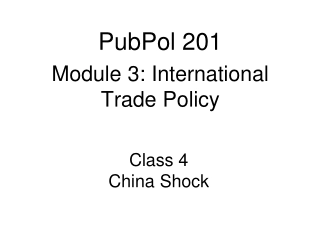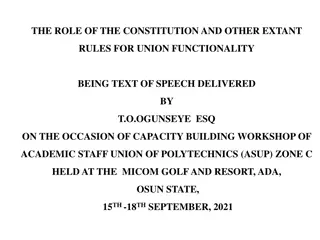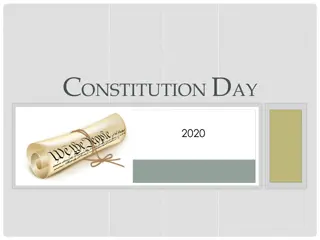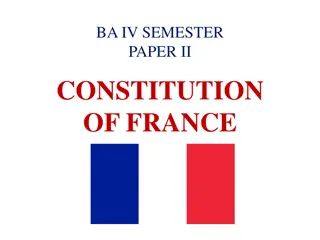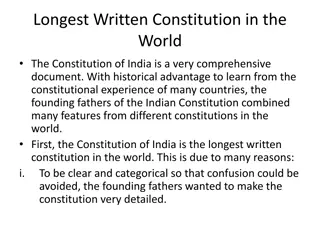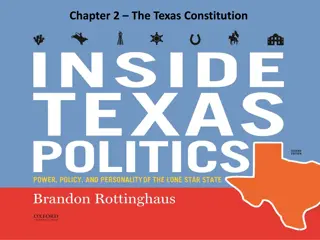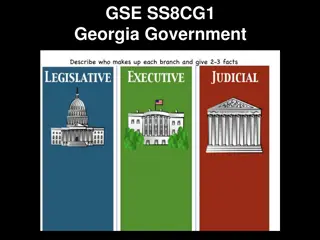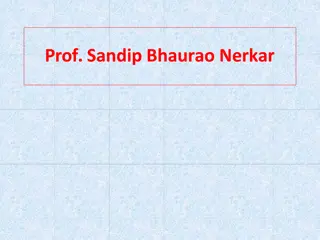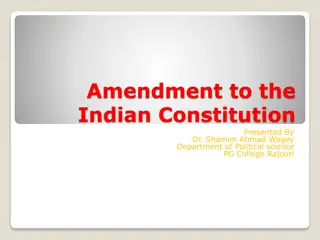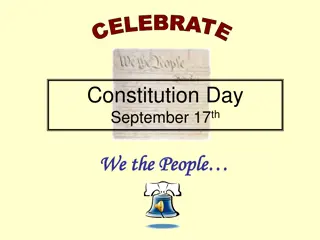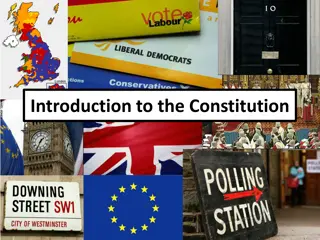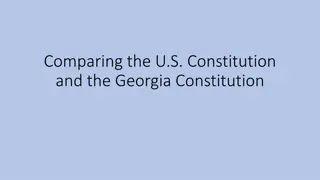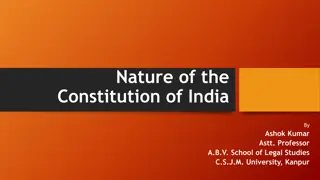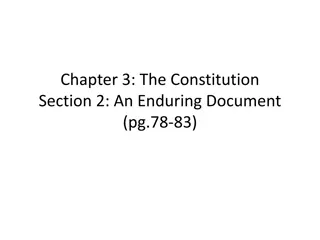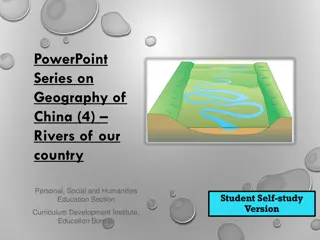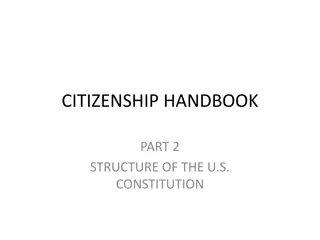Features of China's 1982 Constitution
The 1982 Constitution of China, drafted after extensive discussions, adheres to socialist principles and emphasizes the socialist system as the foundation of the state. With a total of 138 Articles, it is a flexible document allowing for easy amendments and maintains a unitary system with centralized powers. The Constitution highlights the democratic dictatorship led by the working class and emphasizes that all powers belong to the people, who exercise them through the National People's Congress.
Download Presentation

Please find below an Image/Link to download the presentation.
The content on the website is provided AS IS for your information and personal use only. It may not be sold, licensed, or shared on other websites without obtaining consent from the author. Download presentation by click this link. If you encounter any issues during the download, it is possible that the publisher has removed the file from their server.
E N D
Presentation Transcript
CONSTITUTION OF CHINA FEATURES Ms. Ushus Mol E U Department of Political Science
The draft of 1982 Constitution of China was prepared by the Central Committee of the Communist Party of China after prolonged nationwide discussions spread over a span of 2 years. It was officially recognized by the National People Congress (NPC), which met in December 1982. The draft of the Constitution adheres to four cardinal principles namely; adherence to socialist road, to the people s democratic dictatorship, to, the leadership by the Communist Party of China and by Marxism, Leninism and Mao Zedong thought. Following are the salient features of Constitution of China.
A Written Document The Constitution of People s Republic of China is written in nature. It is a brief document containing 138 Articles, which comprises of four chapters. Though, it is brief yet it lays down in sufficient detail. The political, social and economic objectives of the regime. It deals not only with the structure of the state machinery but is also embodies a program for future . According to Article-I of Chinese constitution People s Republic of China (PRC) is a socialist state. The Socialist system is the basic system of People s Republic of China. No individual or organization is allowed to sabotage the socialist system. This principle is based on the definite ideology of Marxism and Leninism as interpreted by.Chinese socialist leader Mao.
Flexible Constitution The Constitution of China 1982 is flexible. Article-64 of the constitution declares, Amendments to the constitution are to be propose by the standing committee of National People Congress (NPC) and by more than I/5thof the deputies to the NPC and adopted the majority vote ofmore than 2/3rdof all deputies to the Congress .Statutes and resolutions are adopted by simple majority of the deputies of National People Congress. In comparison with other rigid constitutions of the world the procedure of amendment in the Chinese Constitution is easier. Thus the constitution is not rigid, but a flexible.
Unitary system The 1982 Constitution like the previous ones (1954.1975.1978) provides for a unitary system. It provides for the centralization of powers at the Centre. Though there are provinces autonomous regimes and municipalities, but they are given powers by the Central Government, which can be taken always whenever it is so desired.
Peoples Republic Article-II of the Constitution says that all powers in People Republic of China belong to the people, which are exercised through National People Congress and Local People s Congress. The people administer the state affairs and manage their economic, social and other affairs through various channels in various ways in accordance with law. The People s Republic of China is a state of people s democratic dictatorships led by the working class based on allowance of workers and peasants and rallying all democratic classes and various nationalities within the country.
Democratic Centralism The Article-III of the constitution lays down that the state organs of People Republic of China apply the principle of democratic centralism. The National People at different levels is instituted through democratic election and responsible to the people. All the state organs are created by the people s congresses. The division of powers and functions between the Centre and the local state organs is guided by the principle of giving full play to initiative and enthusiasm of local authorities under the unified leadership of central authorities. The government of the People Republic of China is a government of the People s Congress on the principle of democratic centralism.
Communist Party of China (CPC) Like the Soviet Russia, the political system of China is also characterized by one party system i.e. the Communist Party of China (CPC) under the leadership of Mao Zedong and Marxist and Leninist thought is the guiding and controlling force and agency (in China). Though the Constitution does not emphatically and clearly declares the supreme position of the Communist Party, yet in practice, the party exercises complete control over the machinery of the government. The party occupies the position of permanently not only in the legislative and executive but also to the judicial branch. Thus every organ of .the government is under its control and nothing can be done either without its consent or against its will.
Unicameral Legislature The constitution of the People Republic of China declares that there will be a unicameral legislature to be known as National People s Congress (NPC). It is the highest organ of the state power and the sole legislative assembly of China. It is repository of all powers and authority in the country and people exercise their powers through it. Its deputies are directly elected by the people.
Fundamental Rights and Duties The Article 33-56 of Chapter II of the constitution give a detail description of the fundamental rights and duties of the citizens. The individual s rights include right to vote, freedom of religion, freedom of speech, freedom of press, freedom of assembly, freedom of association, freedom of procession and of demonstration. The state also protects the right of citizens and their lawfully earned income saving, house, property and also his right to inherit property. The important duties include to safeguard the unity of the country, to abide by the laws of constitution, to defend the motherland and resist aggression etc.
Public Interest The state forbids any person to use his private property to the detriment of the public interest. Again, it must be noted that in China, it is the government and in ultimate sense, the Communist Party that wholly determines what that Public Interest is.
No Discrimination and Exploitation The constitution of China declares that all nationalities are equal which a major characteristic of chines constitution is. All types of discrimination or oppression with any nationality and acts, which undermine the unity of the nationalities are prohibited. It also disbands the exploitation of man by man or exploitation of men by state


![❤[READ]❤ Robotic Exploration of the Solar System: Part I: The Golden Age 1957-19](/thumb/21623/read-robotic-exploration-of-the-solar-system-part-i-the-golden-age-1957-19.jpg)
